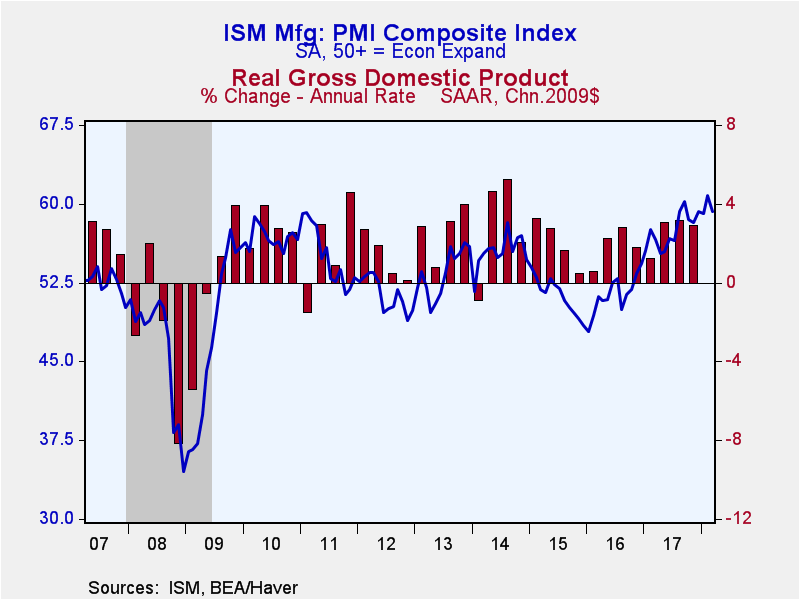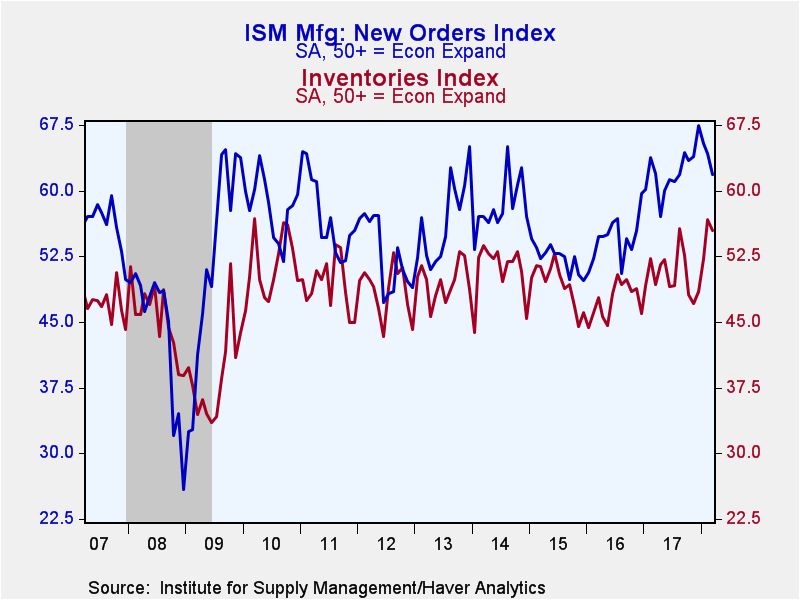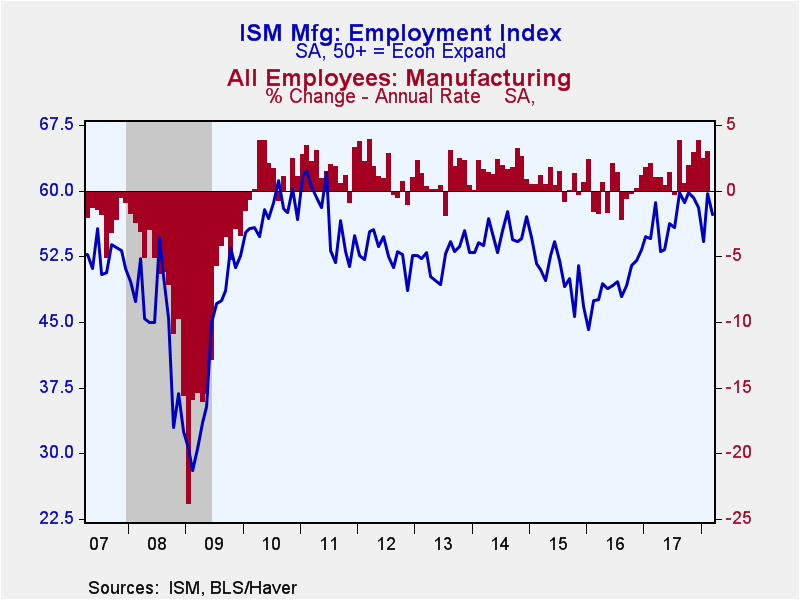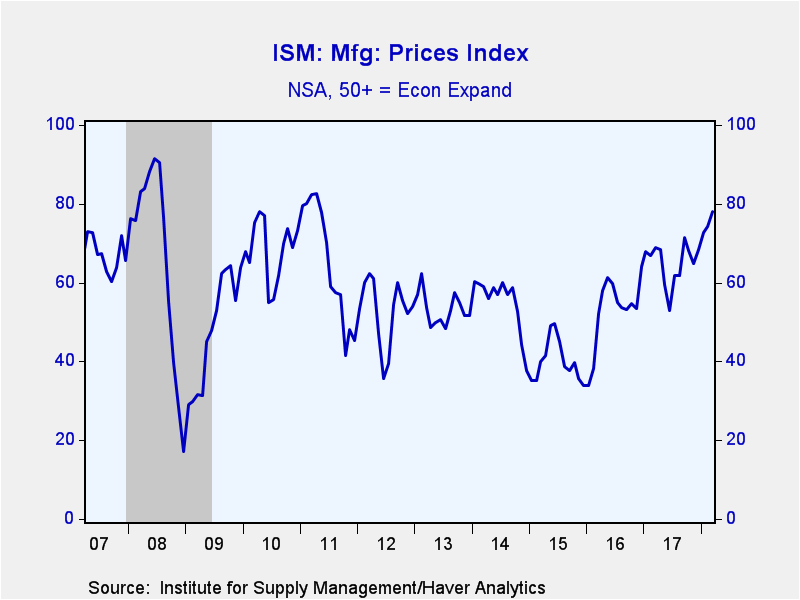 Global| Apr 02 2018
Global| Apr 02 2018ISM Factory Sector Index Backs Away from 2004 High
by:Tom Moeller
|in:Economy in Brief
Summary
Strength in U.S. manufacturing activity eased slightly last month. The March ISM manufacturing sector composite index fell to 59.3 and reversed its February rise. It nevertheless remained near the highest level since May 2004. A level [...]
Strength in U.S. manufacturing activity eased slightly last month. The March ISM manufacturing sector composite index fell to 59.3 and reversed its February rise. It nevertheless remained near the highest level since May 2004. A level of 60.0 had been expected in the Action Economics Forecast Survey. During the last ten years, there has been a 76% correlation between the level of the index and q/q growth in real GDP.
Each of the component series recorded a decline last month. The new orders figure fell sharply to the lowest level since August, and the production series declined to the weakest point since October. The inventories measure eased and the supplier delivery index fell, indicating slightly quicker delivery speeds.
The employment figure eased moderately. A lessened 23% (NSA) of respondents reported higher employment while an increased 11% indicated a decline. During the last ten years, there has been an 87% correlation between the index and the m/m change in factory sector employment.
The prices paid index strengthened to 78.1, the highest level since April 2011. That was up from the 2016 low of 33.5. Fifty-seven percent (NSA) of respondents reported paying higher prices while one percent paid less.
The export order index reversed its February strength with a decline to the lowest level in three months. Nevertheless, it remained up sharply from the 2015 low. The import order index eased m/m but also remained up sharply from the 2015 low. The order backlog series remained strong at the highest level since May 2004.
The ISM figures are diffusion indexes where a reading above 50 indicates increase. The figures from the Institute for Supply Management can be found in Haver's USECON database. The expectations number can be found in Haver's AS1REPNA database.
| ISM Mfg (SA) | Mar | Feb | Jan | Mar'17 | 2017 | 2016 | 2015 |
|---|---|---|---|---|---|---|---|
| Composite Index | 59.3 | 60.8 | 59.1 | 56.6 | 57.4 | 51.4 | 51.3 |
| New Orders | 61.9 | 64.2 | 65.4 | 62.0 | 62.2 | 54.5 | 52.3 |
| Production | 61.0 | 62.0 | 64.5 | 57.3 | 61.0 | 53.8 | 59.3 |
| Employment | 57.3 | 59.7 | 54.2 | 58.7 | 56.8 | 49.2 | 50.7 |
| Supplier Deliveries | 60.6 | 61.1 | 59.1 | 55.6 | 56.8 | 51.8 | 50.8 |
| Inventories | 55.5 | 56.7 | 52.3 | 49.3 | 50.2 | 47.2 | 49.0 |
| Prices Paid Index (NSA) | 78.1 | 74.2 | 72.7 | 68.8 | 65.7 | 53.5 | 39.8 |
Tom Moeller
AuthorMore in Author Profile »Prior to joining Haver Analytics in 2000, Mr. Moeller worked as the Economist at Chancellor Capital Management from 1985 to 1999. There, he developed comprehensive economic forecasts and interpreted economic data for equity and fixed income portfolio managers. Also at Chancellor, Mr. Moeller worked as an equity analyst and was responsible for researching and rating companies in the economically sensitive automobile and housing industries for investment in Chancellor’s equity portfolio. Prior to joining Chancellor, Mr. Moeller was an Economist at Citibank from 1979 to 1984. He also analyzed pricing behavior in the metals industry for the Council on Wage and Price Stability in Washington, D.C. In 1999, Mr. Moeller received the award for most accurate forecast from the Forecasters' Club of New York. From 1990 to 1992 he was President of the New York Association for Business Economists. Mr. Moeller earned an M.B.A. in Finance from Fordham University, where he graduated in 1987. He holds a Bachelor of Arts in Economics from George Washington University.










